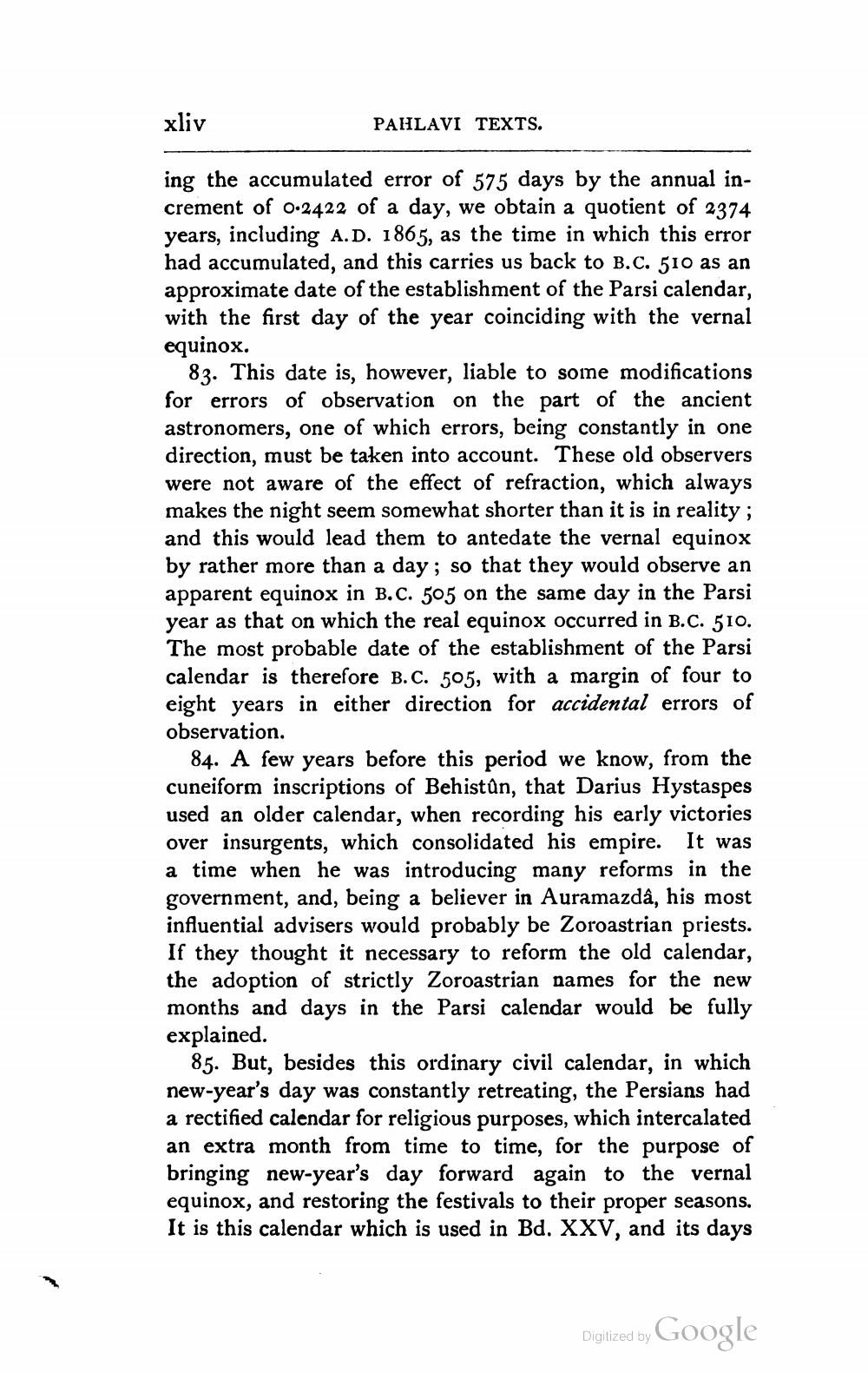________________
xliv
PAHLAVI TEXTS.
ing the accumulated error of 575 days by the annual increment of 0.2422 of a day, we obtain a quotient of 2374 years, including A.D. 1865, as the time in which this error had accumulated, and this carries us back to B.C. 510 as an approximate date of the establishment of the Parsi calendar, with the first day of the year coinciding with the vernal equinox.
83. This date is, however, liable to some modifications for errors of observation on the part of the ancient astronomers, one of which errors, being constantly in one direction, must be taken into account. These old observers were not aware of the effect of refraction, which always makes the night seem somewhat shorter than it is in reality; and this would lead them to antedate the vernal equinox by rather more than a day; so that they would observe an apparent equinox in B.C. 505 on the same day in the Parsi year as that on which the real equinox occurred in B.C. 510. The most probable date of the establishment of the Parsi calendar is therefore B.C. 505, with a margin of four to eight years in either direction for accidental errors of observation.
84. A few years before this period we know, from the cuneiform inscriptions of Behistûn, that Darius Hystaspes used an older calendar, when recording his early victories over insurgents, which consolidated his empire. It was a time when he was introducing many reforms in the government, and, being a believer in Auramazdá, his most influential advisers would probably be Zoroastrian priests. If they thought it necessary to reform the old calendar, the adoption of strictly Zoroastrian names for the new months and days in the Parsi calendar would be fully explained.
85. But, besides this ordinary civil calendar, in which new-year's day was constantly retreating, the Persians had a rectified calendar for religious purposes, which intercalated an extra month from time to time, for the purpose of bringing new-year's day forward again to the vernal equinox, and restoring the festivals to their proper seasons. It is this calendar which is used in Bd. XXV, and its days
Digitized by Google




